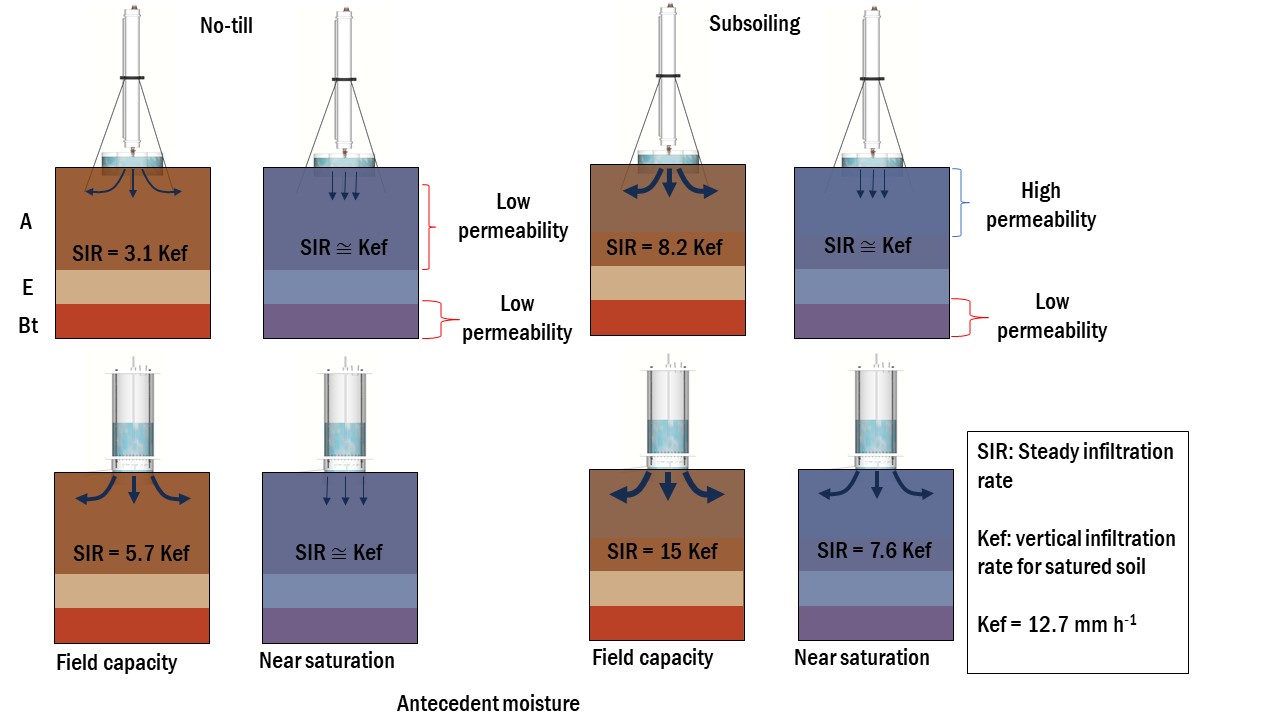Steady infiltration rate: Relation to antecedent soil moisture, soil permeability, and measurement method and period
16/Jan/2024
ABSTRACT Soil steady water infiltration rate (SIR) is a key variable in hydrological modeling, but its relationship to antecedent soil moisture is not yet well understood. We tested the hypothesis that the SIR decreases with the increase in antecedent moisture, and that this relationship depends on permeability to water on the soil surface, the measurement method, and the measurement period. We conducted an experiment in an Argissolo Vermelho-Amarelo Distrófico abrúptico (Psammentic Paleudult – Soil Taxonomy), measuring infiltration in up to […]
Soil Erodibility under Natural Rainfall Conditions as the K Factor of the Universal Soil Loss Equation and Application of the Nomograph for a Subtropical Ultisol
03/May/2018
ABSTRACT: Erodibility represents the intrinsic susceptibility of the soil to the erosion process, represented by the K factor in the Universal Soil Loss Equation (USLE). In Brazil, there are few field experiments determined with a series larger than ten years of data, which are the most reliable for quantifying the K factor. The aim of this study was to determine the K factor of the USLE by the direct method, relating soil losses determined in the field under standard conditions […]
Soil, water and nutrient losses by interrill erosion from green cane cultivation
01/Jun/2012
Interrill erosion occurs by the particle breakdown caused by raindrop impact, by particle transport in surface runoff, by dragging and suspension of particles disaggregated from the soil surface, thus removing organic matter and nutrients that are essential for agricultural production. Crop residues on the soil surface modify the characteristics of the runoff generated by rainfall and the consequent particle breakdown and sediment transport resulting from erosion. The objective of this study was to determine the minimum amount of mulch that […]
Assessment of Efficiency and Adequacy of Retention Terraces
01/Apr/2012
Due to losses caused by water erosion, the development of techniques that increase the efficiency of soil conservation practices is fundamental. Terracing of agricultural lands is an important conservation practice. Bearing in mind that improperly built terraces may negatively affect the landscape, the purpose of this work was to evaluate the efficiency as well as the adequacy of retention terraces. Assessments were performed in four terraces implanted in different states, all located in the mideastern region of the state of […]
Effect of rainfall variability and land use on runoff and sediment in the Pipiripau river basin, in the Distrito Federal, Brazil
01/Feb/2008
The objective of this study was to evaluate the effect of the rainfall variability on the runoff and sediment amount in the Pipiripau river basin (A = 235 km2), in the Distrito Federal, Brazil. To represent the climatic variability of the historic precipitation series, 5 years were selected: the moistest, the driest, an average, and 2 years representing the standard deviations from the series (half-wet and half-dry). After the calibration of the model with basin rainfall and runoff data, each rainfall event was simulated […]
Evaluation of a model for estimating the maximum depth of surface runoff
01/Jun/2001
Water erosion is one of the main processes associated to environmental degradation. The soil detachment and transport depends of the raindrop impact and surface runoff. As the agricultural production losses result from water erosion, the correct design of soil conservation systems is necessary to avoid high costs of installation and maintenance. Pruski and collaborators developed a model to estimate the maximum surface runoff depth under typical agricultural conditions. The objective of this study was to evaluate the model developed by […]

